The city of Philadelphia has always been known for its architectural wonders, and with the advent of technology, it is reaching new heights. Technology has revolutionized the way architects design and execute their projects. From traditional techniques to digital tools, architects are now able to create structures that were once thought impossible. In this blog post, we will delve into the impact that technology has had on architectural drawings Philadelphia. We will take a closer look at how digital tools such as artificial intelligence and machine learning are being used in architecture, and highlight some of the most iconic technologically-driven architectural wonders in the city of Philadelphia. We will also explore the challenges and opportunities that come with implementing technology in architecture and discuss how Philadelphia’s architectural education is adapting to technological changes. Lastly, we will touch upon whether smart and sustainable cities are the future for Philadelphia’s architecture.
Understanding the Evolution of Architectural Drawing
Architectural drawings have undergone a significant evolution over time, incorporating new technologies and digital tools. With the advent of virtual reality (VR) and augmented reality (AR) technologies, the field of architecture has witnessed a shift from conventional drawings to immersive experiences that allow architects to visualize spaces in a more interactive manner. These technological advancements have revolutionized the design process, making architectural drawings more efficient and accurate. Moreover, the use of digital tools has facilitated interdisciplinary collaboration, enabling architects to work seamlessly with professionals from different fields such as interior design and industrial production. Additionally, these innovations have also led to more sustainable design practices, as architects can now assess the feasibility of their designs and explore alternative materials and materiality, all while reducing waste.
Traditional Techniques in Architectural Drawing
Traditional architectural drawings in Philadelphia involved manual drafting techniques, like hand drawings and blueprints. Architects relied on their precision and fine arts skills to create detailed drawings of building plans. These conventional drawings played a vital role in effectively communicating design ideas to stakeholders. With a high level of expertise and precision, these drawings took considerable time to produce. While traditional architectural drawings are still valued today, the advent of digital tools has transformed the design process, making it more efficient and accurate. The integration of technology has revolutionized the way architects create and present their designs.
The Advent of Technology in Architecture
The field of architecture has been significantly impacted by the advent of digital technologies. These technological advancements have revolutionized architectural design in numerous ways. With the introduction of computer-aided design (CAD) software, architectural drawings have become more efficient and precise. Additionally, virtual reality (VR) and augmented reality (AR) technologies have transformed how architects visualize and present their designs, allowing for a more immersive experience. Furthermore, building information modeling (BIM) has streamlined collaboration and information sharing in architectural projects. As a result, technology has opened up new possibilities for architects to explore innovative ideas and push the boundaries of design.
The Role of Digital Tools in Architectural Design
Digital tools play a crucial role in modern architecture, allowing architects to design, visualize, and effectively communicate their ideas. With CAD software, architects can create detailed 2D and 3D drawings, making the design process more efficient. VR and AR technologies offer immersive experiences, enabling stakeholders to explore architectural designs before construction begins. BIM software facilitates collaboration, information sharing, and visualization of building projects. These digital tools have revolutionized architectural design, making it more accessible, precise, and sustainable. By embracing technology, architects can leverage its benefits to create innovative and impactful designs for the built environment.
The Use of Artificial Intelligence and Machine Learning in Architecture
Artificial intelligence (AI) and machine learning technologies are revolutionizing architectural design. With the help of AI algorithms, architects can now analyze vast amounts of data, empowering them to make informed design decisions. Machine learning algorithms are capable of learning from existing architectural drawings, assisting architects in generating multiple design options. Moreover, AI technologies, like generative design, are opening up new horizons of architectural innovation and sustainability. From enhancing efficiency to promoting sustainability and responsiveness to user needs, the power of AI is transforming the field of architecture. Its impact on architectural drawing in Philadelphia is undeniable.

Technological Innovations in Architecture in Philadelphia
Philadelphia, a city known for its architectural excellence, is leading the way in embracing technological advancements in design. From iconic wonders like the Philadelphia Museum of Art, which showcase the power of digital tools in architecture, to healthcare facilities integrating sensors and analytics to improve patient experience, Philadelphia is at the forefront of innovation. The city fosters interdisciplinary collaboration, with architectural firms and universities driving advancements in design technologies. For example, Jefferson University’s architecture faculty built an architectural pavilion that highlights the potential of digital tools in design. These case studies demonstrate the transformative impact of technology on architectural drawing in Philadelphia.
Iconic Technologically-Driven Architectural Wonders in Philadelphia
Philadelphia is home to several iconic technologically-driven architectural wonders that highlight the city’s commitment to innovative design. One such marvel is the Philadelphia Museum of Art, renowned for its modern architecture and the use of digital tools in creating unique structures. Additionally, Jefferson University’s architecture program has constructed a pavilion that showcases the transformative power of digital technologies in architectural design. The integration of augmented reality (AR) in various architectural projects has also made buildings more interactive and immersive. These iconic architectural wonders demonstrate how Philadelphia’s architectural excellence is enhanced by the incorporation of new technologies.
Challenges and Opportunities in Implementing Technology in Architecture
Implementing technology in architecture is not without its challenges. Architects and firms face the task of learning new tools and adapting to digital workflows. This integration also requires investment in training and education to ensure a smooth transition. However, despite these challenges, technology presents exciting opportunities for architectural design. It allows for greater efficiency, sustainability, and collaboration in the industry. Architects can leverage digital tools to create innovative and user-centric designs. The advancements in design technologies push the boundaries of what is possible, opening up new possibilities for architectural creativity and problem-solving.
How is Philadelphia’s Architectural Education Adapting to Technological Changes?
Philadelphia’s architectural education institutions are embracing technological changes. Universities like the University of Pennsylvania are integrating new tools and teaching students skills like BIM and virtual reality. The curriculum is designed to reflect the importance of collaborative design technologies and interdisciplinary collaboration. This prepares students for the modern practice of architecture in a digital era.
Are Smart and Sustainable Cities the Future for Philadelphia?
Smart and sustainable cities are gaining traction in Philadelphia as the city embraces technology to enhance urban planning and design. With a focus on energy-efficient buildings and green spaces, Philadelphia envisions a future where technology improves connectivity, sustainability, and overall quality of life for its residents.
Conclusion
In conclusion, technology has had a significant impact on architectural drawing in Philadelphia. The evolution of architectural drawing techniques has been shaped by technological advancements. Traditional methods have been replaced by digital tools that offer more precision and efficiency in the design process. The use of artificial intelligence and machine learning has further revolutionized architectural design, allowing for more innovative and sustainable solutions. Philadelphia has become a hub for technologically-driven architectural wonders, showcasing the city’s adaptability to change. However, implementing technology in architecture also comes with its challenges and opportunities. Architectural education in Philadelphia is evolving to incorporate these technological changes, preparing students for the future of the industry. With the rise of smart and sustainable cities, Philadelphia is poised to lead the way in embracing technological advancements in architecture.







